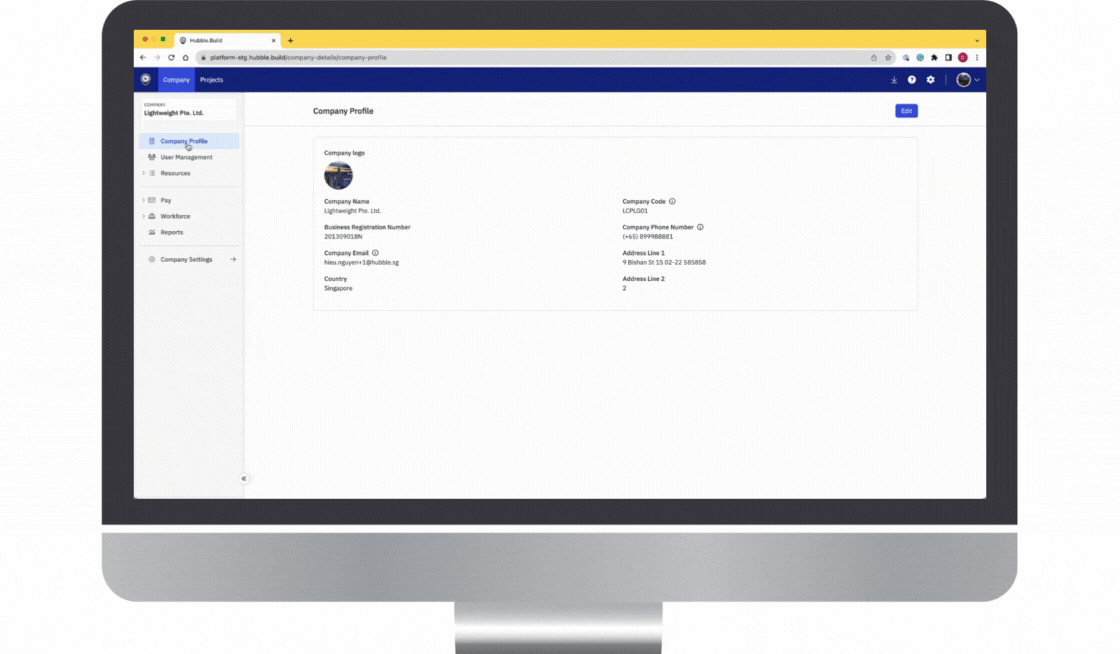
A Strategic Guide to Precision Work Hours and Overtime (OT) Calculation, Seamless Shift Scheduling, and Optimal Workforce Management
Managing a shift based workforce in industries like construction and manufacturing is a complex challenge for HR professionals. Varied shifts, diverse roles, and the necessity for 24/7 operations make accurate work hour calculations crucial. Inaccuracy not only impacts finances but also poses risks of unfair compensation and non-compliance with local regulations on working hours and overtime.
Complexity of Work Hours and Overtime (OT) Calculation
HR professionals in construction and manufacturing industries often face unique challenges when it comes to computing accurate work hour and overtime for their workforce. Some of the typical challenges include:
Dynamic Work Schedules in Round-the-Clock Operations
Construction and manufacturing often involve 24/7 operation, creating dynamic work schedules with irregular hours and shifts for workers across various trade functions. This complexity makes it challenging to use traditional 9-to-5 tracking methods, as employees may work overtime or have non-standard schedules.
Complex Overtime (OT) Calculation
Overtime rules in these industries can be complex due to factors such as shift differentials, weekend work, and extended hours. Ensuring accurate calculation of overtime pay is crucial for compliance and fair compensation.
Mobile Workforce
Construction and manufacturing employees are often on the move, making it challenging to capture accurate data. Traditional time and attendance systems such as manual timesheet stamping may not be suitable for a mobile workforce.
Regulatory Compliance on Work Hours and Overtime Rules
Industries alike to construction and manufacturing sectors are subject to various labour laws and regulations that vary by location. This is especially so for developed nations such as Singapore, with well-established and enforced labour laws that dictate work hours, overtime pay, and other related regulations. These laws are in place to protect workers' rights, ensure fair working conditions, and promote a healthy work-life balance. Adhering to these regulations might require companies to invest in proper record-keeping systems and monitoring mechanisms in ensuring accurate payroll processing.
Union Contracts
Many workers in construction and manufacturing industries are covered by union contracts that may have specific rules and requirements regarding working hours, breaks, and overtime. Ensuring compliance with these contracts adds an extra layer of complexity.
Employee Accountability
In dynamic work environments, ensuring that employees accurately report their working hours can be challenging. Implementing systems to track time and attendance accurately without relying solely on self-reporting is essential.
Manual Timecard Processing
Manual timecard processing is susceptible to various errors, including buddy punching, illegible handwriting, miscalculations, and data entry mistakes which lead to issues such as overpayment, underpayment, and potentially non-compliance with labour regulations. Additionally, the manual collection, review, and data entry associated with timecards are time-consuming for HR professionals.
Integration with Payroll Systems
Seamless integration between time and attendance tracking systems and payroll systems is crucial. Any discrepancies or delays in this integration can lead to payroll errors and employee dissatisfaction.
Financial Impact of Inaccurate Work Hours and OT Calculation
Beyond the operational challenges, inaccurate work hours and overtime (OT) calculation have profound financial implications. The diverse nature of work environments, coupled with stringent industry regulations, magnifies the impact on companies' financial well-being. As project demands intensify and timelines tighten, miscalculations in work hours emerge as a financial risk companies can ill afford.
Risk of Unfair Compensation
Inaccurate work hour calculation can lead to disparities in compensation, impacting employee morale and satisfaction. Ensuring fairness in compensation is integral to a harmonious work environment.
Financial Consequences for Companies
Companies face financial repercussions when inaccurate calculations result in overpayment or underpayment of employees. These consequences can erode profits and undermine financial stability.
The Role of Employee Shift Scheduling Software
In response to the multifaceted challenges presented by shift based workforce management, the emergence of Employee Scheduling Software such as the Hubble Workforce Management System – Manpower Scheduling Module, has redefined how companies approach the intricate task of organising and optimising employee shifts . This strategic tool goes beyond conventional methods, offering innovative solutions to the complex challenges faced by construction and manufacturing sectors.
Optimising Workforce Efficiency
In a landscape where workforces span multiple project sites, seamless orchestration of shifts becomes the linchpin of operational efficiency. Employee Scheduling Software acts as a virtuoso conductor, ensuring every team member synchronises with project requirements.
Navigating Overtime Rules
Construction overtime, governed by intricate industry rules, demands a guide through the labyrinth. The software ensures compliance, accurate calculations, and ultimately, fosters cost-effective operations.
Mitigating Shift Based Workforce Challenges
The software streamlines the unique challenge of managing work hours across diverse project sites. It provides flexibility, allowing employees to clock in and out at various locations within the same day.
Enhancing Precision in Payroll
Accuracy in work hours and overtime computation is a financial imperative. With precise digital timesheets and automated processes, the software becomes an ally in avoiding errors, saving time, and ensuring payroll precision.
Selecting the Right Software for Efficient Workforce Management
As organisations embark on the journey of selecting Employee/Staff Scheduling Software, a keen focus on features that seamlessly integrate with operational processes is essential. Each capability serves as a building block for optimal workforce management, addressing specific needs in attendance tracking, timesheet processing, working hours computation, and payroll.
1. Employee Scheduling
Utilise scheduling tools with shift rostering and scheduling templates, and recurring shift options for daily, weekly, monthly or even annually basis, for individual or mass employees or by trade functions, enabling efficient scheduling tailored to organisational needs.
2. Real-time Adjustments
Adjust schedules in real-time based on changing project dynamics, optimising workforce deployment with dynamic scheduling.
3. Employee Database Registry
Manage workers’ licences, certifications, skills, performance, attendance, and records with a centralised document management portal, centralising the management of worker information.
4. Digital Timesheet Generation
Generate digital timesheets with a click of a button, streamlining timesheet processing for precision.
5. Seamless Payroll Integration
Choose software that seamlessly integrates with various payroll apps/systems, offering the flexibility to manage timesheets and process payroll efficiently as your business scales.
6. Integration with Operational Processes
Integrate with time attendance system's attendance tracking, permit to work, toolbox meetings, safety inspections, etc., ensuring seamless coordination for overall project efficiency.
7. GPS Time Tracking Attendance
Track working hours and overtime accurately using GPS-enabled time clocks, ensuring precision in attendance records.
8. Biometric Facial Recognition
Enhance security with integrated facial recognition technology on turnstile gate system, elevating security and eliminating time theft.
9. Enhanced Security for Mobile Check-ins/out
Strengthen security with facial mismatch alerts and geofencing validation, bolstering security for mobile check-ins of large workforce groups.
10. Time Clock Management Rules
Set flexible rules for start and end times or duration of hours, providing flexibility for diverse workforce management.
11. Breaktime Management
Set automated breaks to comply with local regulations, ensuring compliance with mandatory break periods while maintaining productivity.
12. Overtime Management
Define multiple overtime shifts within each shift template, efficiently managing and organising overtime requirements.
13. Multiple Clock Ins
Configure the calculation of working hours based on first clock in and last clock out to allow employees to clock in and out multiple times per day.
14. Multiple Sites
Allow employees to clock into different work sites within the same day.
15. Built-in Compliance for Audit Trail
Provide a detailed activity log for each attendance record, ensuring accountability and regulatory compliance.
16. Batch Review and Verify of Bulk Employees Records
Streamline the review and verification of employee records in bulk, efficiently managing large diverse workforces.
Charting a Course for Efficient and Fair Workforce Management with Hubble Workforce Management System
In conclusion, as industries evolve and dynamic operating needs persist, investing in the right employee scheduling software becomes not just a choice but a cornerstone of successful workforce management.
The Hubble Workforce Management System emerges as a pivotal ally in this journey toward efficient, fair, and compliant workforce management across multiple project sites and industry sectors. With its robust features, including GPS time tracking, biometric facial recognition, real-time adjustments to shifts and scheduling, and seamless integration with operational processes, Hubble stands as a comprehensive solution for streamlining workforce coordination, ensuring regulatory compliance, and enhancing financial precision.

Effortlessly tailor shift management and computing of work hours in the new Manpower Scheduling Module
By embracing advanced workforce management tools like the Hubble Workforce Management System, companies can navigate the challenges of managing shift based workforces with confidence. This strategic imperative not only optimises operational efficiency but also fosters a work environment where employees are compensated fairly, regulations are adhered to, and financial processes are streamlined.
Request for a demo today to chart your course toward operational excellence, regulatory compliance, and financial precision with Hubble – your trusted partner in the realm of workforce management.
Share this article
Explore Related Content
Stay up to date with our latest news features!

